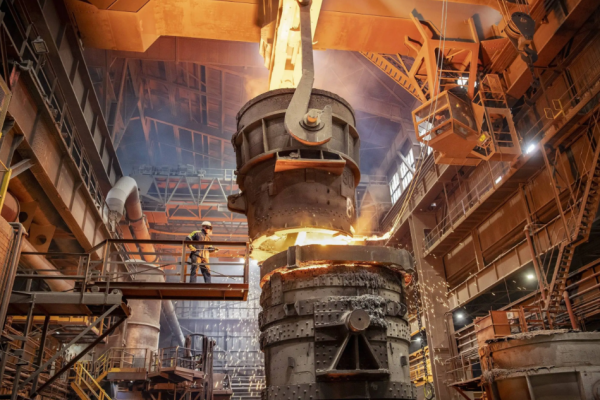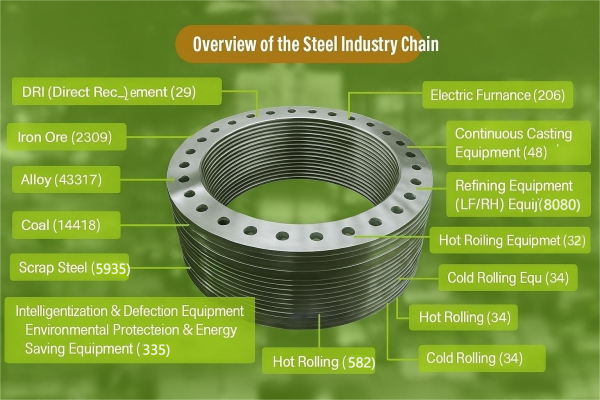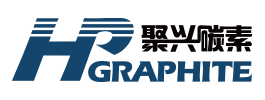【Industry Chain】Understanding the Steel Industry Upstream and Downstream Landscape in One Article

Graphite electrodes are vital to EAF steelmaking—acting as the "core component" for arc heating. With excellent conductivity and heat resistance, they're key to improving steel quality and output. Master them, master EAF steelmaking!
【Industry Chain】Understanding the Steel Industry Upstream and Downstream Landscape in One Article
Steel
When the hydrogen-based shaft furnace at Baowu Group's Zhanjiang Steel Base reduces iron ore into bright red molten iron, carbon dioxide emissions drop sharply from 1.8 tons under the traditional process to 0.36 tons; when Yonggang Group's energy management system optimizes the energy consumption data of 80,000 points in real time, annual CO₂ emissions are reduced by more than 10,000 tons; when Baoshan Iron & Steel's non-oriented silicon steel supports the "heart" of new energy vehicle drive motors—the steel industry, the most traditional industrial material, is undergoing a profound transformation of "greening, intelligence, and upgrading."
As the global hub of the steel industry, China's crude steel output reached 1.005 billion tons in 2024 (accounting for 53.3% of the world total), but it faces dual constraints: over 80% external dependence on iron ore and the "dual carbon" targets. This article will deconstruct the trillion-level industry's full-chain ecosystem, revealing how China's steel sector is breaking resource constraints through technological innovation, shifting from "scale first" to "quality leadership."
Industry Chain
PART.01
The Strategic Value of Steel

As the "skeleton of industry," steel's strategic value is reflected in both its fundamental support capacity and its role in driving transformation. In the modern industrial system, every 10,000 tons of steel can support the construction of 25 kilometers of railway or 150,000 square meters of buildings, manufacture 3,000 automobiles, or 500,000 kilowatts of wind power equipment. China's steel industry has already formed a complete system with an annual capacity of 1 billion tons, supporting 50% of global infrastructure construction and 40% of manufacturing output.
1. Performance Iteration and Application Upgrading
The continuous evolution of steel materials drives the upgrading of high-end manufacturing:
Strength Revolution: The third-generation automotive steel developed by Baosteel has a tensile strength of 2000 MPa, 40% lighter than traditional steel, improving new energy vehicle range by 15%;
Efficiency Breakthrough: The magnetic induction of oriented silicon steel has increased from 1.7T 30 years ago to 1.9T, reducing UHV transformer losses by 40%. Baosteel's product holds 35% of the global market share;
Function Expansion: Wear-resistant steel lasts more than five times longer than traditional steel, supporting SANY excavators to operate 500,000 kilometers without major repairs; weathering steel applied in the Hong Kong-Zhuhai-Macao Bridge enables 120 years of maintenance-free service.
2. Global Industry Landscape
China's steel industry demonstrates characteristics of "scale leadership, structural imbalance":
Output and Consumption: In 2024, global crude steel output was 1.885 billion tons, with China accounting for 53.3%. China's apparent steel consumption accounted for 49.2% of the global total, of which construction steel accounted for 45%, while machinery and automobile steel together accounted for 30%;
Resource Constraints: Iron ore external dependence exceeds 80%, with imports reaching 1.124 billion tons in 2024. Scrap steel utilization rate is only 30%, far below Europe and the U.S. at 60%;
Technology Gap: High-end automotive sheets and aerospace steels still rely on imports for 15%, but companies such as Baosteel and TISCO have already achieved domestic production of critical "choke point" products like oriented silicon steel and ultra-thin steel ("hand-tear steel").
PART.02
Panoramic Analysis of the Steel Industry Chain

Upstream: Raw Material and Energy Supply
This stage provides the material and energy foundation for steelmaking and constitutes the core of cost.
Raw Material Mining and Processing:
Iron ore: mining, beneficiation, and agglomeration (sintered ore, pellets).
Coal: coking coal mining, washed and processed into metallurgical coke (the main fuel and reducing agent in blast furnaces).
Scrap steel: recycling, sorting, crushing, and processing of obsolete social scrap and in-plant scrap.
Fluxes: limestone, dolomite, etc., used for slagging and removing impurities during smelting.
Energy and Auxiliary Materials:
Energy: thermal coal, electricity, natural gas, oxygen, etc.
Alloying elements: manganese, chromium, nickel, molybdenum, etc., used to produce ferroalloys (such as ferrosilicon, ferromanganese) to adjust steel composition and properties.
Midstream: Steel Production and Processing
This stage is the core of the industry chain, transforming raw materials into steel products with specific forms and properties through complex processes.
Ironmaking:
In blast furnaces, iron ore undergoes reduction reactions with coke and fluxes to produce molten iron.
Steelmaking:
In converters or electric furnaces, molten iron (or scrap steel) undergoes oxidative refining, significantly reducing carbon content and removing impurities to obtain qualified molten steel.
Main routes: blast furnace-converter (long process, iron-based) and electric arc furnace (short process, scrap-based).
Casting:
Qualified molten steel is continuously cast into various shapes of billets (square billets, slabs, rectangular billets).
Rolling and Processing:
Hot rolling: heating billets and rolling them into plates, strips, wires, profiles, rails, etc.
Cold rolling and deep processing: further rolling and treating hot-rolled products at room temperature, producing higher-precision, better-surface cold-rolled sheets, coated sheets (galvanized, tin-plated), color-coated sheets, silicon steel sheets, etc.
Downstream: Applications and Distribution
This stage is where steel products realize their value, connecting with the broad consumer market.
Distribution and Trade:
Steel flows to end users through direct supply from mills, large traders, and regional steel markets.
End-User Markets:
Machinery manufacturing: heavy machinery, machine tools, agricultural equipment requiring medium-thick plates and profiles.
Automotive industry: high-strength cold-rolled sheets and galvanized sheets for car bodies, quality steel for components.
Home appliances: plates and pre-coated sheets for refrigerators, washing machines, air conditioners, etc.
Shipbuilding: ship plates for hull structures.
Energy sector: special plates and steel pipes for oil and gas pipelines, wind towers, nuclear power equipment.
Construction: rebar, wire rod, H-beams, etc., for real estate and infrastructure (bridges, highways, airports).
Manufacturing: containers, hardware products, metal packaging, etc.
Supporting and Recycling Systems
This stage permeates the entire industry chain, ensuring its stability and sustainability.
Logistics and Transportation: railway, highway, and waterway transport of raw materials and products, port terminal services.
Technology and Equipment: R&D in metallurgical technologies, production of smelting and rolling equipment, automation control systems.
Recycling and Regeneration: recycling, dismantling, sorting, and processing of scrap steel, which is key to achieving circular utilization of steel materials.
Feel free to contact us anytime for more information about the EAF Steel market. Our team is dedicated to providing you with in-depth insights and customized assistance based on your needs. Whether you have questions about product specifications, market trends, or pricing, we are here to help.
No related results found








0 Replies